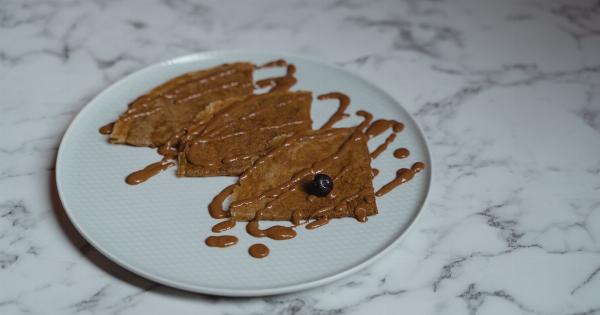Cooking with peanuts has become a staple in many cuisines around the world. However, what many people may not realize is that it can also increase the danger of developing peanut allergies.
Peanuts are one of the most common food allergens, and researchers have found that exposure to peanuts during early childhood can increase the risk of developing an allergy. In this article, we will explore why cooking with peanuts can be risky for allergy-prone individuals and discuss ways to minimize the danger.
Understanding Peanut Allergy
Peanut allergy is a hypersensitivity reaction triggered by specific proteins found in peanuts.
When an individual with this allergy consumes peanuts or products containing peanuts, their immune system mistakenly identifies these proteins as harmful invaders and launches an immune response. This immune response can range from mild symptoms, such as hives or itching, to more severe reactions, such as difficulty breathing and anaphylaxis, a life-threatening condition.
Early Exposure and Allergy Development
Research suggests that early exposure to peanuts in infancy and early childhood plays a crucial role in the development of peanut allergies.
For a long time, it was believed that avoiding peanuts during infancy could prevent the development of allergies. However, recent studies have shown the opposite to be true.
A landmark study called the “LEAP” study (Learning Early About Peanut Allergy) found that introducing peanuts to infants at high risk of developing allergies actually reduces their risk.
The study showed that regular consumption of peanuts early in life, between four and 11 months of age, reduced the likelihood of developing a peanut allergy by up to 86%. This groundbreaking research has led to updated recommendations by medical professionals regarding the introduction of peanuts to infants.
Hidden Allergens in Cooked Peanut Dishes
While it may seem counterintuitive, cooking with peanuts can increase the danger for individuals with peanut allergies.
When peanuts are cooked, their proteins can undergo structural changes, making them more resistant to degradation by digestive enzymes. This can lead to the production of new allergenic proteins or the alteration of existing ones, increasing the risk of triggering allergic reactions.
Additionally, many peanut dishes, especially those from different cultures, may contain hidden allergens. Peanuts are often used as a thickening agent, flavor enhancer, or garnish in various recipes.
These hidden sources of peanuts can catch people off guard, increasing their exposure to allergens and the likelihood of an allergic reaction.
Cross-Contact and Cross-Reactivity
Even if you are careful to avoid cooking with peanuts, cross-contact can still occur. Cross-contact happens when a food comes into contact with peanuts or peanut residue unintentionally.
This can occur during food preparation, manufacturing, or handling, especially in shared kitchen spaces or restaurants where peanut-containing ingredients are frequently used.
Cross-reactivity is another factor to consider. Some individuals with peanut allergies may also exhibit cross-reactivity to other legumes, such as soybeans, peas, or lentils.
This means that they might experience an allergic reaction to these foods as well, even though they do not contain the same proteins as peanuts. This cross-reactivity complicates the avoidance strategy for individuals with peanut allergies, as they may need to be cautious around a wider range of foods.
Minimizing the Danger of Cooking with Peanuts
While cooking with peanuts can increase the allergy danger, there are measures that can be taken to minimize the risk for individuals with peanut allergies:.
1. Read Food Labels Carefully
Always read food labels carefully, even if the product doesn’t seem directly related to peanuts. Manufacturers often include statements regarding potential cross-contact with allergens, including peanuts.
By being mindful of these warnings, you can avoid potential exposure to peanut residues.
2. Choose Alternative Ingredients
If you enjoy cooking dishes that traditionally contain peanuts, consider using alternative ingredients.
There are numerous nut and seed butters available, such as almond or sunflower seed butter, that can provide a similar taste and texture without the risk of triggering a peanut allergy.
3. Communicate Your Allergy
When dining out or attending social events where food is served, inform the server or host about your peanut allergy.
By communicating your allergy, you raise awareness, and precautions can be taken to minimize the risk of cross-contact or inadvertently serving foods containing peanuts.
4. Educate others About Peanut Allergies
In some cases, people may not fully comprehend the severity of peanut allergies or the potential danger they pose.
Take the opportunity to educate your friends, family, and colleagues about peanut allergies, including the signs of an allergic reaction and the importance of avoiding cross-contact.
5. Always carry an Epinephrine Auto-Injector
For individuals with severe peanut allergies, it is crucial to carry an epinephrine auto-injector, such as an EpiPen, at all times.
These devices are designed to be used in emergencies to quickly deliver a dose of epinephrine, a medication that can counteract the life-threatening effects of an allergic reaction.
Conclusion
While cooking with peanuts may add flavor and flair to meals, it also increases the allergy danger for individuals with peanut allergies.
Early exposure to peanuts can play a role in the development of allergies, and the proteins in cooked peanuts can become more allergenic. It is essential to be vigilant about hidden sources of peanuts, cross-contact, and cross-reactivity. By taking necessary precautions, individuals with peanut allergies can minimize the risk and continue to enjoy a safe and diverse range of foods.




























